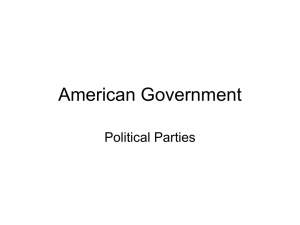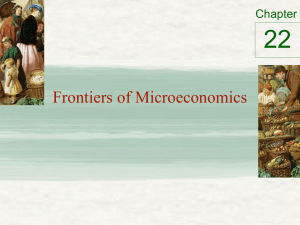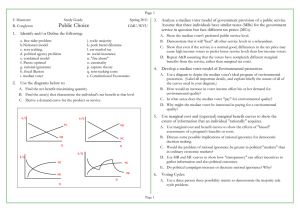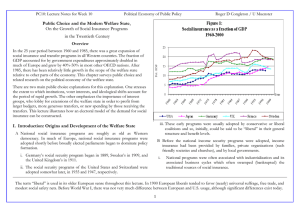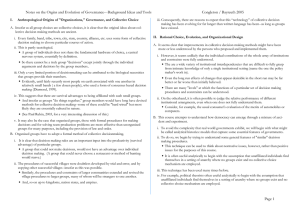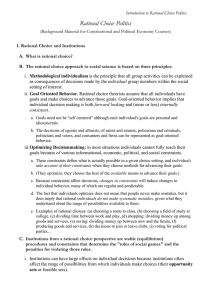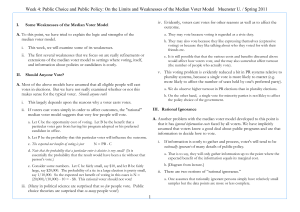Fall 2003:
advertisement
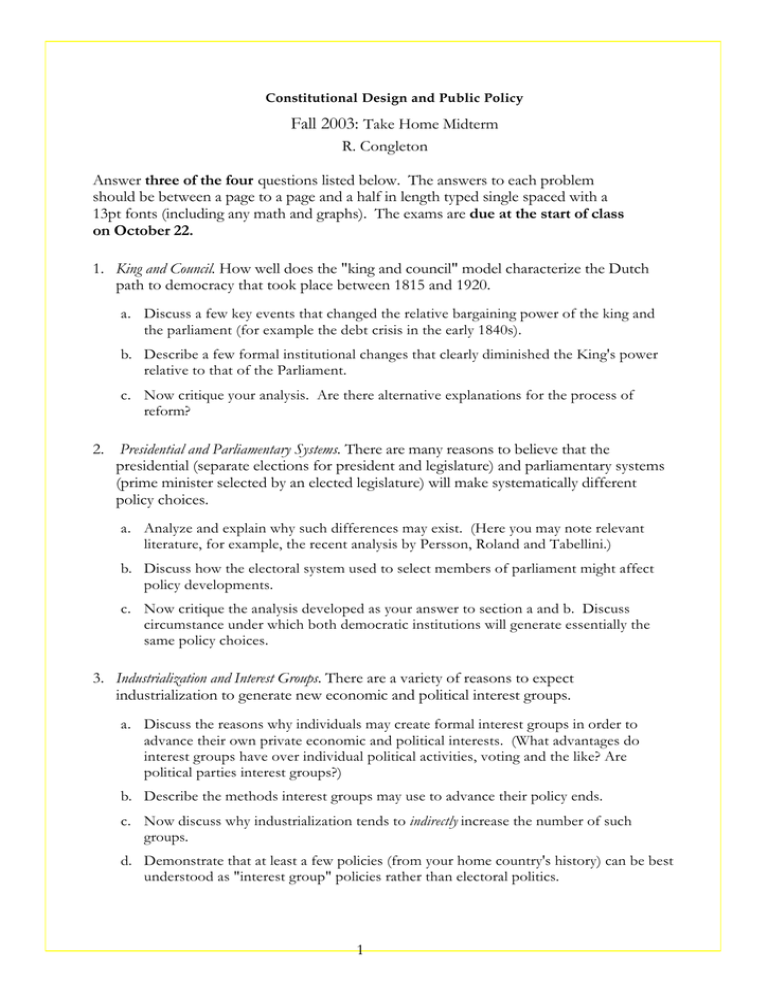
Constitutional Design and Public Policy Fall 2003: Take Home Midterm R. Congleton Answer three of the four questions listed below. The answers to each problem should be between a page to a page and a half in length typed single spaced with a 13pt fonts (including any math and graphs). The exams are due at the start of class on October 22. 1. King and Council. How well does the "king and council" model characterize the Dutch path to democracy that took place between 1815 and 1920. a. Discuss a few key events that changed the relative bargaining power of the king and the parliament (for example the debt crisis in the early 1840s). b. Describe a few formal institutional changes that clearly diminished the King's power relative to that of the Parliament. c. Now critique your analysis. Are there alternative explanations for the process of reform? 2. Presidential and Parliamentary Systems. There are many reasons to believe that the presidential (separate elections for president and legislature) and parliamentary systems (prime minister selected by an elected legislature) will make systematically different policy choices. a. Analyze and explain why such differences may exist. (Here you may note relevant literature, for example, the recent analysis by Persson, Roland and Tabellini.) b. Discuss how the electoral system used to select members of parliament might affect policy developments. c. Now critique the analysis developed as your answer to section a and b. Discuss circumstance under which both democratic institutions will generate essentially the same policy choices. 3. Industrialization and Interest Groups. There are a variety of reasons to expect industrialization to generate new economic and political interest groups. a. Discuss the reasons why individuals may create formal interest groups in order to advance their own private economic and political interests. (What advantages do interest groups have over individual political activities, voting and the like? Are political parties interest groups?) b. Describe the methods interest groups may use to advance their policy ends. c. Now discuss why industrialization tends to indirectly increase the number of such groups. d. Demonstrate that at least a few policies (from your home country's history) can be best understood as "interest group" policies rather than electoral politics. 1 4. Median Voter. Construct a one private good, one public good utility maximizing median voter model of government finance. Assume that the government uses a simple cost sharing rule to finance production of a pure public good, G, and that the median voter's income, Y, is exogenously determined. The cost share's, ci, need not be equal but are assumed to be exogenous for the problem at hand. Define all notation, and briefly describe each step in the development of your model. a. Characterize first order conditions for the median voter's preferred public service level and the median voters demand for the public service, G. b. Determine whether an increase in the median voter's income causes an increase in his preferred public service level. c. Discuss briefly what this model predicts, if anything, about the long term growth of government services. (Hint: recall that the technology of public production, the cost shares, and individual incomes tends to change through time.) d. (Do not use the same model as developed in the hand out, although you are free to use it as a point of departure.) 2





